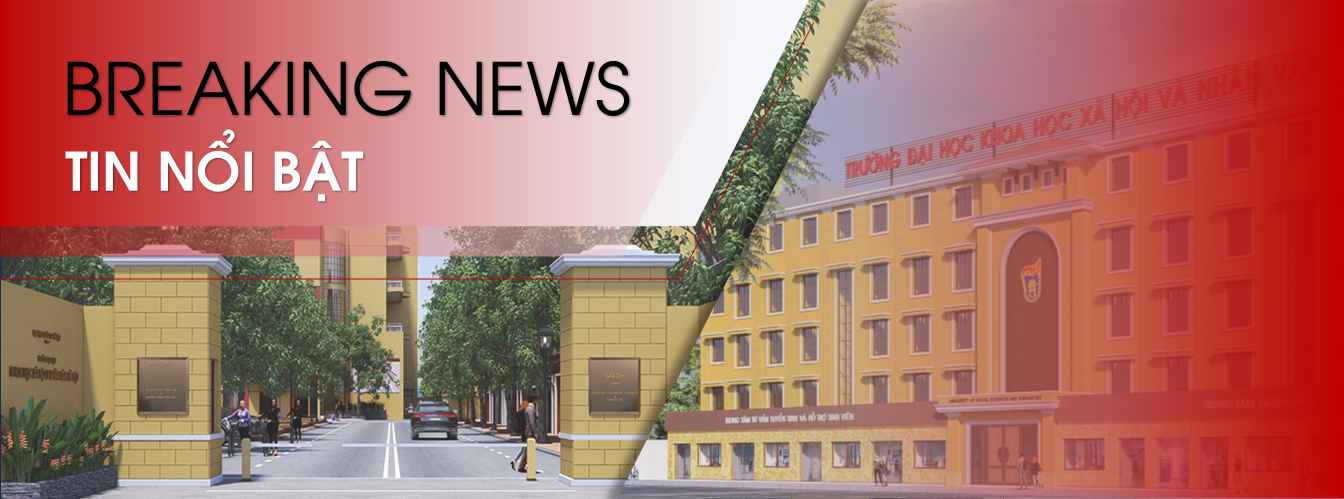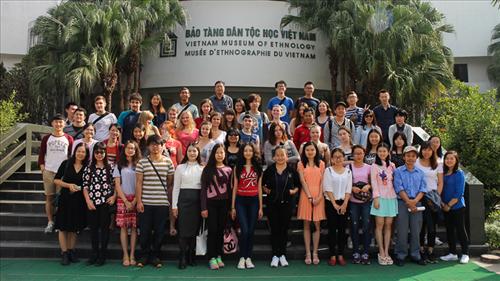The students came from many different countries such as Russia, France, Germany, Japan, Korea, Czech Republic, Ukraine, Mongolia, Laos and China… Most of them were Agreement students (students who come to Vietnam to study within the framework of the Agreement signed by the Vietnamese government with other countries, and are granted scholarships by the Vietnamese side), in addition there were short-term students and especially undergraduate students majoring in Vietnamese studies. This field trip was part of the study plan to help international students not only learn Vietnamese but also understand more about Vietnamese culture.
Students were divided into many groups, visiting and listening to the tour guide's explanation about the ethnic groups in Vietnam, the language systems, the regional characteristics, etc. During their time living and studying in Vietnam, most of the students only interacted with Vietnamese people. Coming to the museum, they had the opportunity to learn about the cultures of other ethnic groups living on the S-shaped land of Vietnam, such as the funeral scene of the Muong people, the costumes of the Thai people, the conical hats of the Nung people, the baskets of the Xo Dang people, the buffalo carts of the Cham people, etc. The curious eyes and eager faces clearly showed the surprise and interest of international students in the diverse, rich and unique cultures of the ethnic groups in Vietnam.
After thoroughly studying the artifacts displayed in the indoor museum, the students went to visit the outdoor museum together. They were very excited to directly set foot and touch the houses of some ethnic groups that were transported to the museum and rebuilt by the ethnic people themselves in the outdoor exhibition area. These were houses such as the Tay stilt house, the Bana communal house, the Giarai tomb house, the Ede long house, the Cham two-roofed house... A series of questions were asked by the students to the teachers such as why there are so many wooden statues around the Giarai tomb house? What is the purpose of the communal house that high? Why is it said that Vietnamese houses have two rooms and three wings?... After the teachers' enthusiastic explanations, somewhere there were soft words: "I understand", "so that's how it is"... which made both teachers and students satisfied.
The useful field trip ended after nearly 4 hours of visiting the museum. The lesson helped students understand more about the ethnic groups of Vietnam, while enhancing the exchange between international students, as well as strengthening the relationship between teachers and students. On the way back, there were endless questions, discussions, and exchanges between students to prepare for the group presentation next week. This also vividly demonstrated the efforts of the Faculty in the trend of innovating university teaching methods as well as applying modern methods in teaching and learning Vietnamese as a foreign language.






